Henan TV's "Tang Palace Night Banquet" takes us back to the Tang Dynasty, a dance that makes us marvel at the"Chinese culture is profound" and makes more people start to focus on traditional culture.
Today we introduce a new theatre production. It is a Chinese dance drama "Zhi Ci Qing Lǜ (只此青绿, The Painting Journey—The Legend of A Panorama of Mountains and Rivers)", which is based on the logic of the creation of "A Panorama of Mountains and Rivers (千里江山图)", the only work of the Chinese painter Wang Ximeng (王希孟) from the Northern Song Dynasty.
It is a joint production by The Palace Museum, China Oriental Performing Arts Group, and People's Daily Online! After its premiere at the National Centre for the Performing Arts in Beijing, it immediately received an exposure of 247 million and was well received by the audience!
The whole drama is about the upcoming exhibition of A Panorama of Mountains and Rivers, a researcher (in the drama is known as the Zhan Juan Ren 展卷人) from The Palace Museum, after studying "A Panorama of Mountains and Rivers", entered the inner world of the painter Ximeng through time travel, and the interplay of time and space allowed the exhibitor to witness the precious time when Ximeng Wang painted the painting.
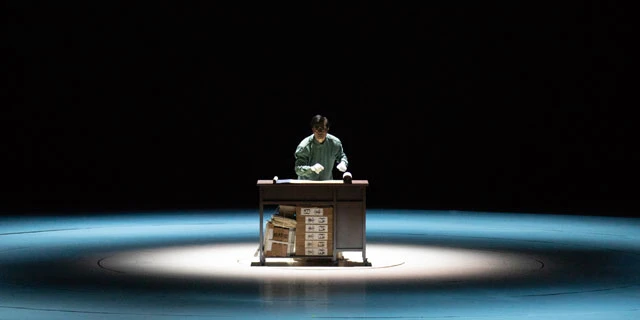
Zhan Juan Ren
The audience also follows the scroll exhibitor's steps, following the outline of the chapters of "Zhan Juan (展卷, spreading the scroll), Wen Zhuan (问篆, asking for seal script), Chang Si (唱丝), Xun Shi (寻石), Xi Bi (习笔), Cui Mo (淬墨, quenching ink), and Ru Hua (入画, painting)", and enters the world of Ximeng's paintings. ...... slowly spreading the scroll in 120 minutes, writing a song of a beautiful hymn of artisanship.
Creation of the story
Beauty is the basis for conveying the spiritual world of "A Panorama of Mountains and Rivers".
"A Panorama of Mountains and Rivers" is a famous painting of the Song Dynasty, which has a history of 900 years. It is not easy to bring such a painting to the stage and transform it from a flat surface to a three-dimensional dance presentation, giving the audience the feeling of unfolding the scroll and feeling the "poetry" in the dance. Therefore, the three creators, Liya Zhou, Zhen Han, and Junrui Xu, encountered many difficulties in the initial creation.
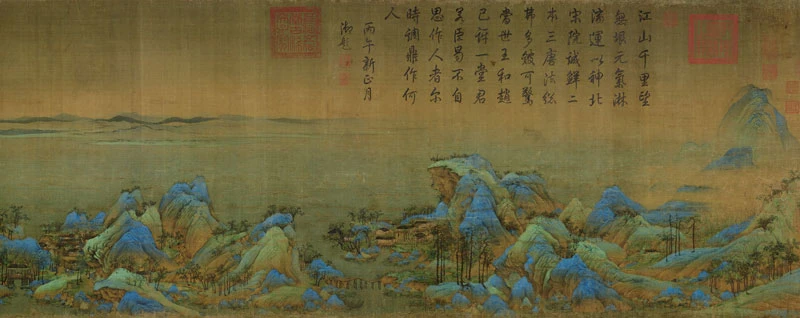
A Panorama of Mountains and Rivers (partial)
Zhen Han said in the interview that, unlike many ink paintings, "A Panorama of Mountains and Rivers" is a "youthful" painting, and Ximeng Wang was only eighteen years old when he created the painting. The word "youth" became an important source of inspiration, and it is reflected in the lime green color that is the core color of the painting and the drama.
In addition, in order to deepen their understanding of the painting, Liya Zhou and Zhen Han also went to communicate with the specialists at The Palace Museum to learn some guidelines for viewing the painting on a scroll: "A Panorama of Mountains and Rivers" is a long scroll, and when it is opened on the table, it must be unfolded with the left hand and put away with the right, constantly unfolding it forward and putting it away backward, and the general length of the unfolded picture is generally shoulder width. So the viewer sees the picture differently from different angles. The painting itself is fluid, and the stage is naturally fluid. They then weave all this into the choreography.
Painting Scroll Stage
The stage of "The Painting Journey" is cleverly designed with concentric circles, restoring the process of "spreading" the traditional Chinese painting scroll. In the painting, there is no boundary between heaven and earth, no boundary between landscape and water, and everything is transformed quietly in the flow of clouds and water. The circles are interlocked, also the intersection of space and time. Time, space, speed, past and future, overlap each other.
In the drama, the Zhan Juan Ren is standing on such a disc, gazing at the Ximeng of a thousand years ago. The young man of a thousand years ago devoted his life to the wish of "this painting is painted with heaven and earth, and it is enough for those who come and go to see the lime green", and the Zhan Juan Ren has spent his whole life, insisting on guarding and inheriting and exploring the heart of Ximen.
The stage design and stage movement of the dance drama "The Painting Journey" is very complex, using ground turntables and aerial circular mechanical movements to create a distinctive choreographic effect.
At the same time, all stage designs must be closely coordinated with the actors' movements and projections, and no mistakes are allowed. Such accurate staging is not just another manifestation of craftsmanship.
Lime Green Hua Fu
If you've seen A Panorama of Mountains and Rivers, your first impression will be of gorgeous lime and green.
How did the creators mix the lime and green into a creative approach and present it on the stage? The exquisite costume design in the drama makes the audience can't help but exclaim that they are impressed by the beauty of the Song Dynasty, "It's a feast of Chinese aesthetics".
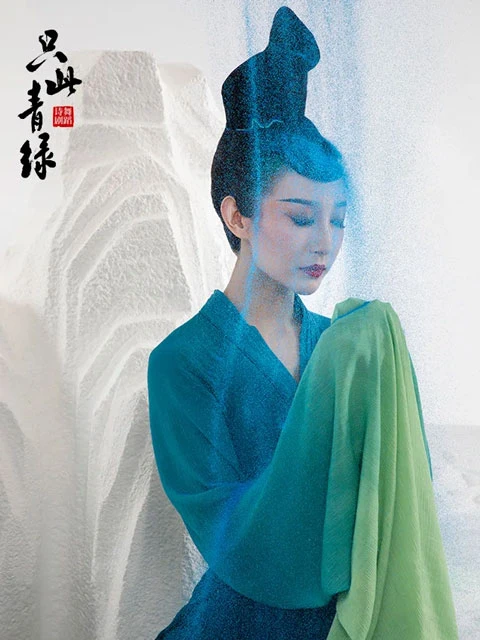
White silk, indigo seal engraving, ochre-brown stone, green-grey pen, and black-grey ink, various charming and elegant classical Chinese colors, let people wander through the Song Dynasty aesthetics and traditional Chinese interest with a distinct fluidity and strong cultural flavor.
Anyone familiar with Chinese dance drama will be familiar with the name of costume designer Donglin Yang. He has been in charge of the costume design of many popular dance dramas such as "Du Fu" and "The Eternal Wave". Whether it is the gorgeous ancient style of the Tang Dynasty or the graceful and elegant Republican temperament, the costumes he designed will amaze the crowd as soon as they appear on stage.
The costumes for the dance-poem drama "The Painting Journey" refer to a large number of historical materials and faithfully retrace the characteristics and costume styles of the Song Dynasty aesthetics. Emphasis the negative space temperament, generalization, and simplicity, to show the colorful and colorful in subtlety, and to show the Song Dynasty style between the skirt and sleeves.
From the red round-necked robe of female officials, to the intent of light pink of Hanlin Academy, to the original painting of "A Panorama of Mountains and Rivers", the small white dots and small white people among the mountains and rocks, the unity of style and color subconsciously create the unprecedented Song Dynasty.
The deliberation of fabrics is to the extreme. How to use fabrics to interpret the colors in the painting on the stage? For example, hemp, different thicknesses of dyed lime, and green are different shades. The final selected fabric, with lime and green collided with a variety of layers, containing a unique oriental aesthetics.
Impressive music
At the end of "The Painting Journey", Zhan Juan Ren and Ximeng stare deeply across the long table. The music of the strings is saddening.
The composer of the drama is Lü Liang. He is also one of the original composers of popular dramas such as "The Story of Minglan", "Serenade of Peaceful Joy" and "Nirvana in Fire 2".
Lü Liang really put in a lot of effort to score this production. The music of the Song Dynasty is very light and elegant, and the tuning is different from today. Many of the music materials of the Song Dynasty have been lost, and only the words are left. "This creation for 'The Painting Journey', The Palace Museum team also gave us a detailed talk about every aspect of the painting, and I felt I was on a mission to create it."
In the drama, the process of creating and making traditional paintings, such as brush making, ink making, and other traditional techniques are presented on the stage."
"I also watched a lot of documentaries before creating it, such as what the process of ink making is like, with the repeated pounding in between." When Lü Liang heard the sound of pounding, "dong dong dong," he captured these realistic sounds and put them in the music.
With such a mission of reflecting the temperament of the Song Dynasty, Lü Liang polished a soundtrack tailor-made for "The Painting Journey", which brought the audience into the landscape of the Song Dynasty more vividly.
Up-and-coming actors
The success of a dance drama cannot be achieved without the dedication of the actors. In order to polish the stage of A Panorama of Mountains and Rivers, and to acquire the true "Song temperament", the actors have given their best.
Zhang Han, who plays the role of Ximeng in the drama, hired a teacher to learn how to paint "A Panorama of Mountains and Rivers" in order to get closer to the character, gaining sincerity and awe from the immersive experience. In order to present the obsession and persistence of Ximeng, he put in a lot of effort, lost a lot of weight because of the pressure.
The two chief choreographers, Liya Zhou, and Zhen Han, also designed a lot of shapes and movements for the girls, which extremely beautiful. But at the beginning to determine the dance movements, the two did not choreograph dance sections for half a month, looking for breath, looking for feelings, the actors have become a little anxious. Until more than four months of rehearsal down, from the choreographer to the actors, all slowed down time, slowed down their mindset, and slowly integrated into the work.
Young dancer Qingyang Meng played the symbolic role of "Qing Lǜ (青绿)". Qingyang is also very accurate in her role of this more emotional role. The audience was impressed by her interpretation of a simple "brush of the sleeve", which seemed perfect. Her performance on stage, even with a simple "sleeve flick", through her interpretation, the audience on stage felt that it was almost perfect.
At the end of the drama "The Painting Journey", there is a poem.
“无名无款,只此一卷,青绿千载,山河无垠”
"No name, no sign-off, only this scroll, lime and green for a thousand years, the mountains and rivers are boundless."
This is the main theme of this dance drama. The process of a painting from 0 to 1 and then to endless, from the production of silk paper, to the brush and ink, to the painting and the final circulation, many nameless and faceless people all leave their marks on this scroll at some moment.
Time will not remember everyone's name precisely, but we will remember everyone because they left their marks with their skills. This dance drama leaves another lime green mark on "A Panorama of Mountains and Rivers".
Highlights of the Zhi Ci Qing Lǜ:
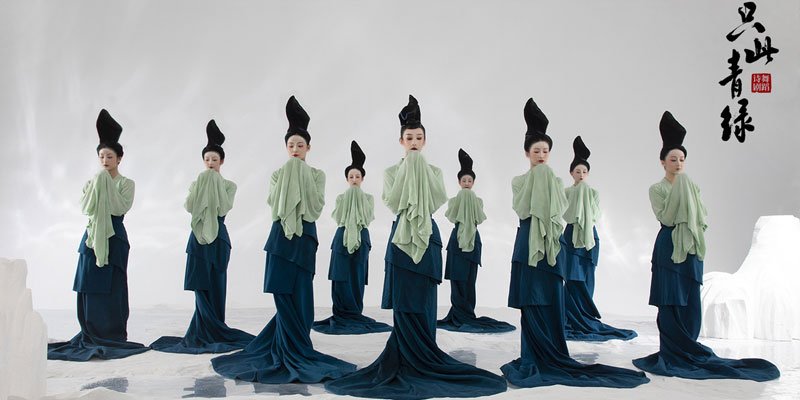
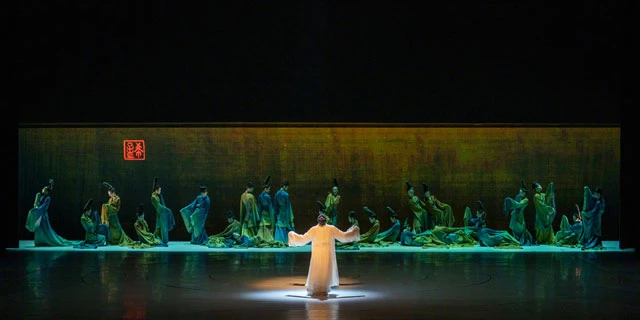
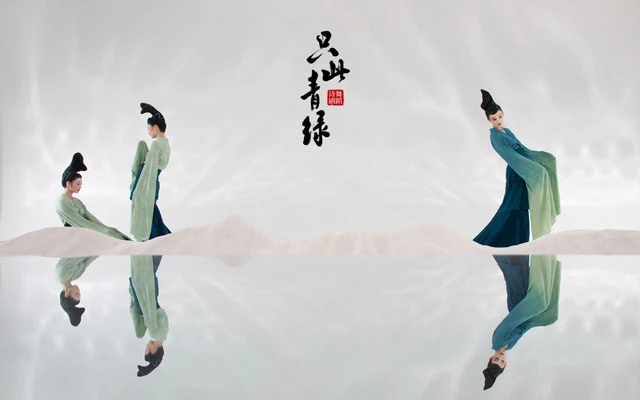
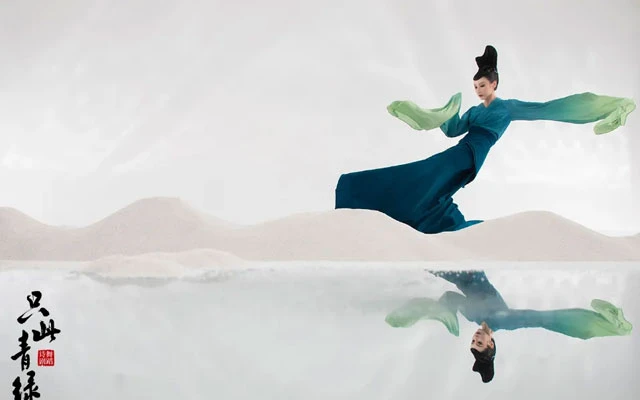
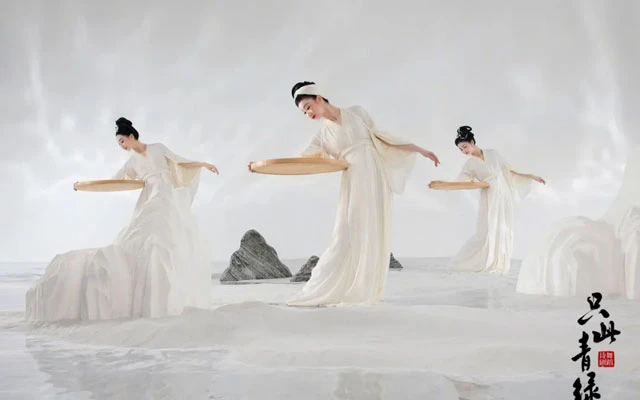
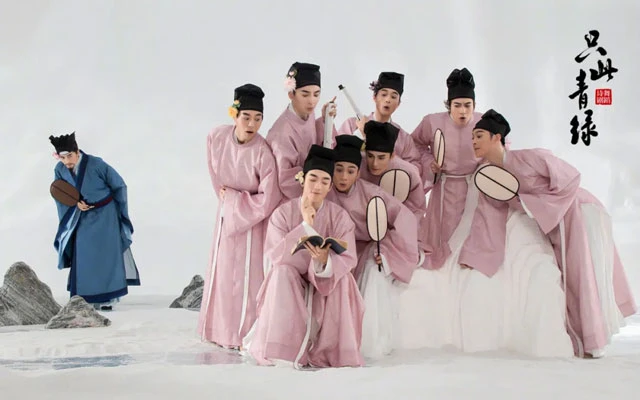
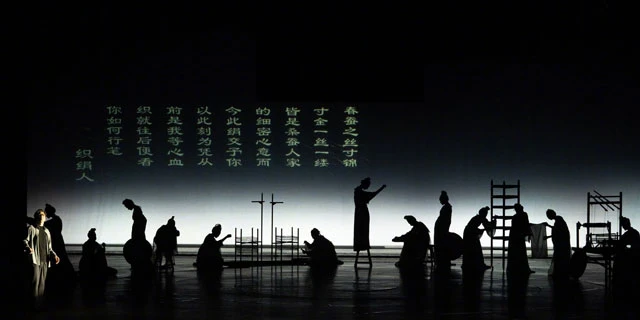

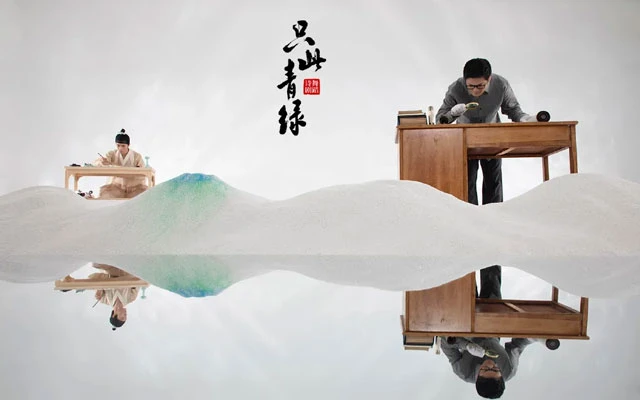
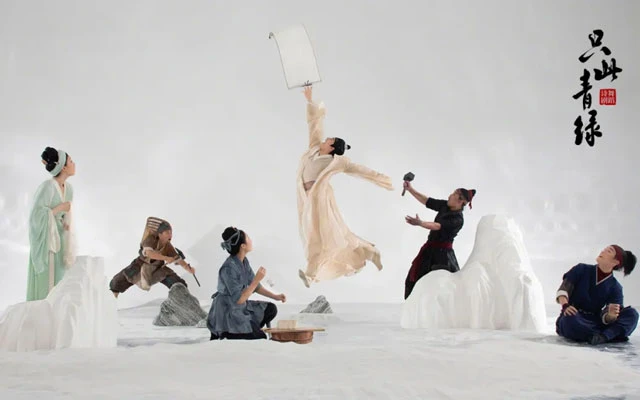
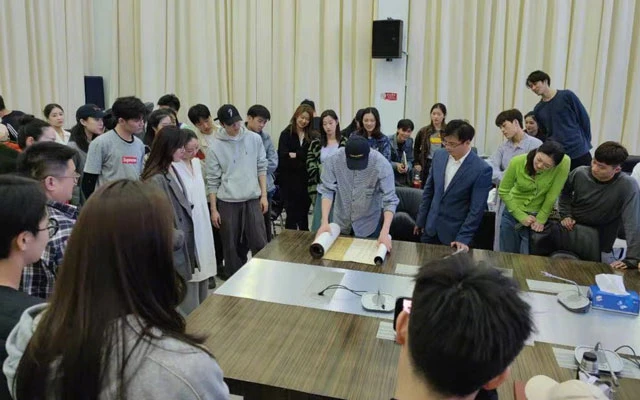

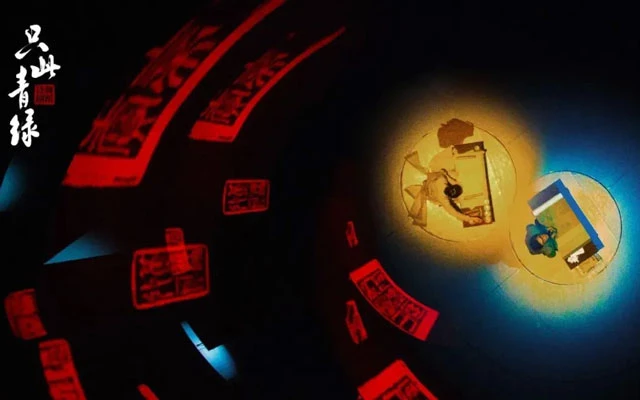
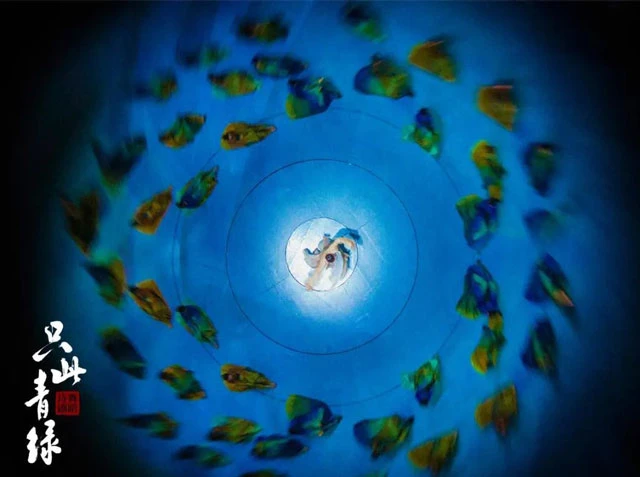
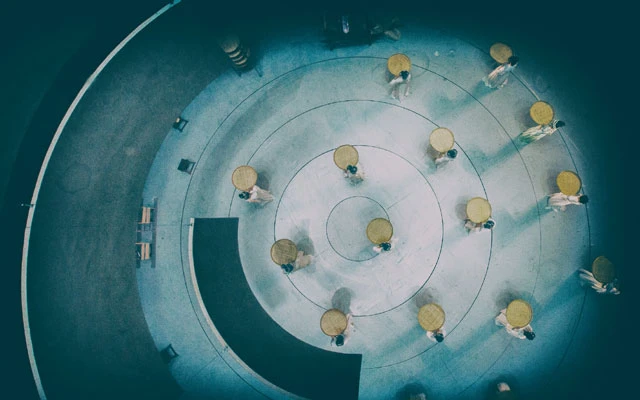

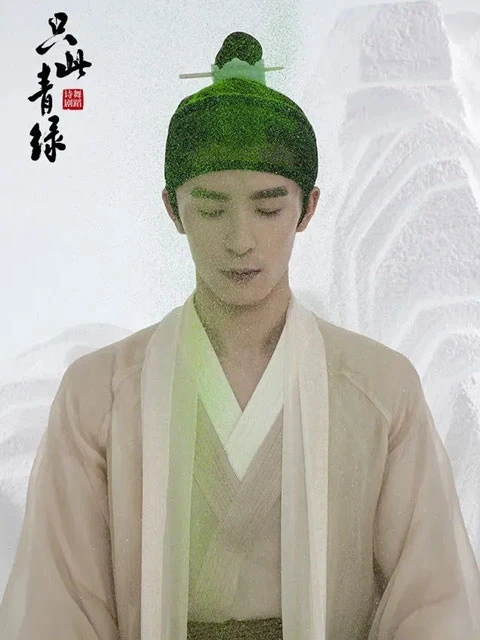
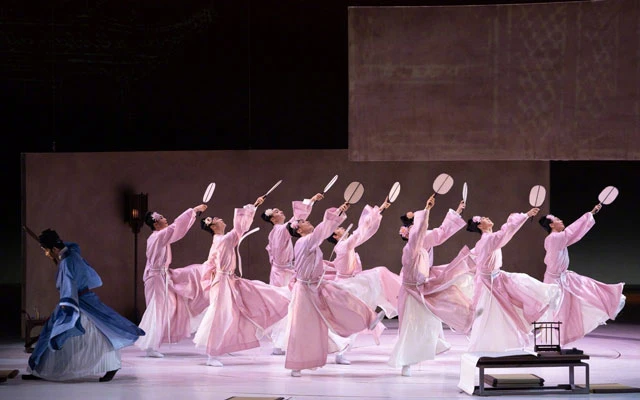
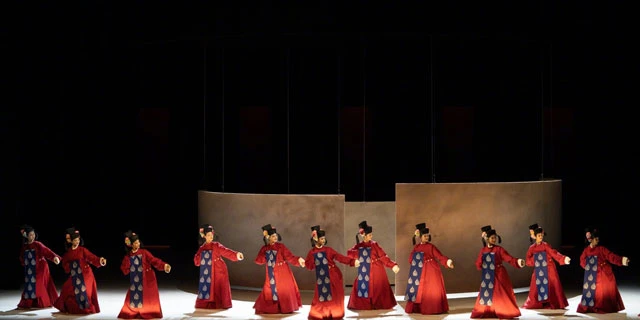

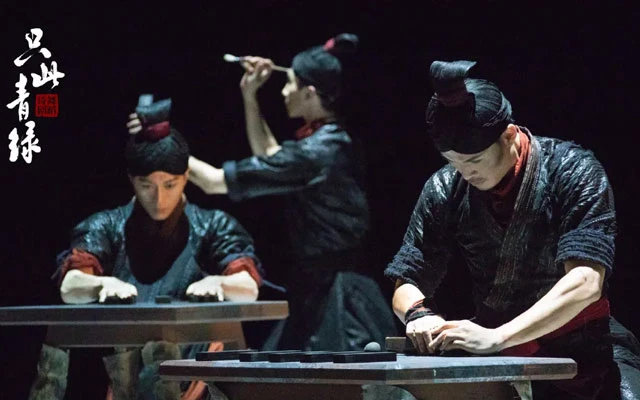
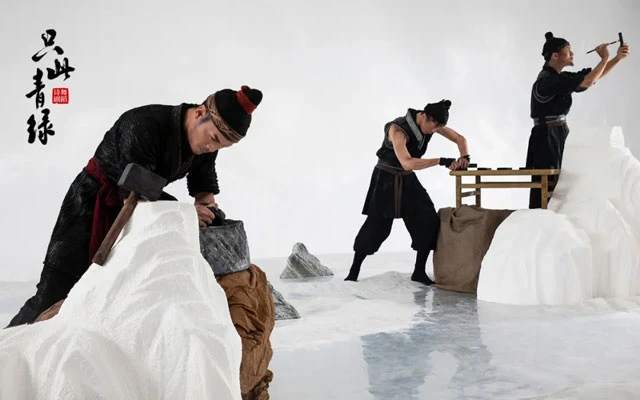

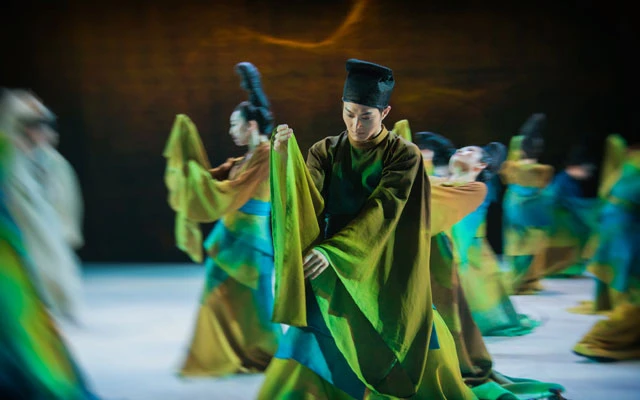
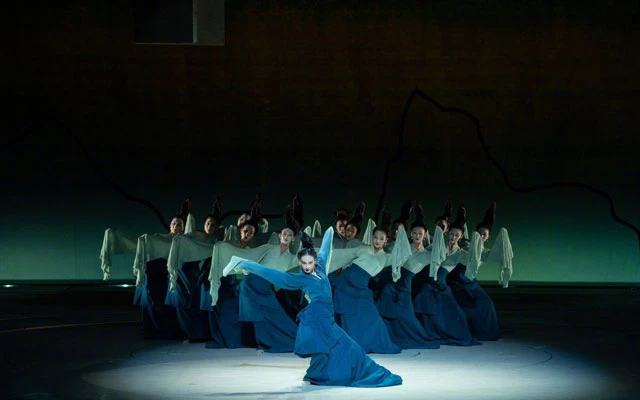
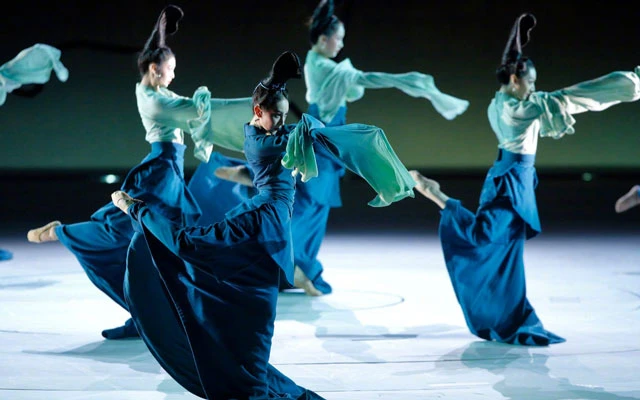

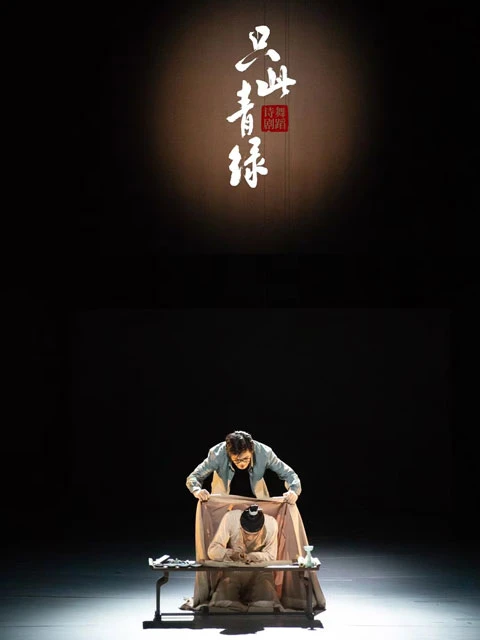

Melalui gambar ini bisa Kunilai ini adalah sebuah teater yang liar biasa
Through the pictures, I can feel that it is a very good stage drama.